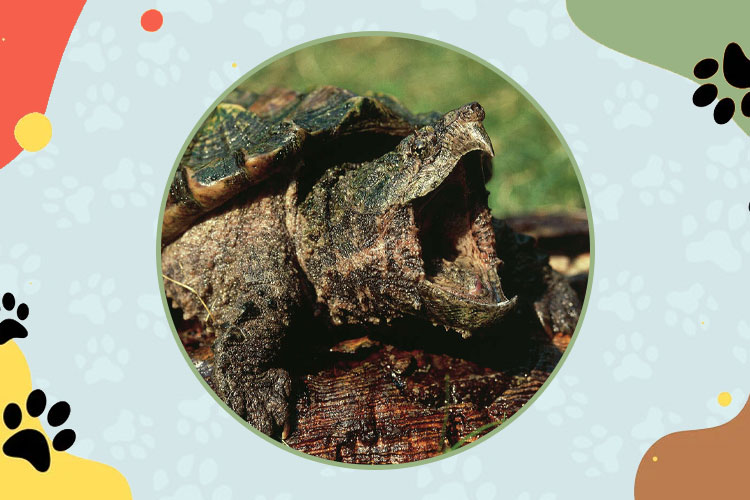Table of Contents Show
Snapping turtles are some of the most intriguing creatures in the wild. With their prehistoric looks and unique behaviors, they capture the curiosity of anyone who encounters them. Let’s dive into some fascinating facts about these remarkable reptiles.
The Ancient Origins of Snapping Turtles
Did you know snapping turtles have been around for millions of years? Their lineage dates back to the age of dinosaurs, surviving mass extinctions and adapting through time. These ancient creatures have an evolutionary history that’s as old as time, showcasing their resilience and adaptability. Like living fossils, snapping turtles offer a glimpse into our planet’s distant past. Their closest modern relatives are the alligator snapping turtles, which share similar characteristics and behaviors.
Distinctive Features of Snapping Turtles
Snapping turtles are known for their powerful jaws and aggressive demeanor. Their beak-like mouth can deliver a bite strong enough to snap bones, a trait that helps them hunt and defend. They grow quite large, with some reaching over 35 pounds. Their rugged shells, often covered in algae, provide excellent camouflage, making them look like rocks in the water. Have you ever noticed their long tails? They’re almost as long as their shells! Their eyes are positioned on the sides of their heads, giving them a wide field of vision to spot potential threats and prey.
Where Do Snapping Turtles Live?
Snapping turtles prefer freshwater habitats such as lakes, rivers, and swamps. You’ll find them throughout North America, from Canada to the Gulf of Mexico. These adaptable creatures can thrive in both slow-moving and fast-flowing waters. Whether hidden in muddy bottoms or basking near the shore, they’ve mastered the art of blending in. They often bury themselves in the mud at the bottom of a water body, with only their eyes and nostrils exposed, waiting for prey or avoiding predators.
What Do Snapping Turtles Eat?
Snapping turtles are omnivores with a diverse diet:
- Plants: They consume various aquatic plants, which provide essential nutrients and aid digestion.
- Fish: They hunt and eat fish, utilizing their powerful jaws to catch and crush them.
- Amphibians: Frogs and other amphibians are common prey, contributing to their diet.
- Birds: Occasionally, they catch and eat small birds that venture too close to the water’s edge.
- Invertebrates: Insects, worms, and mollusks are also part of their diet, adding to their varied menu.
Their hunting technique is fascinating—they lie in wait, motionless, until unsuspecting prey comes close. Then, with lightning speed, they snap their powerful jaws shut, capturing their meal. Their diet plays a crucial role in maintaining the balance of their ecosystem by controlling the populations of their prey.
Behavioral Traits of Snapping Turtles
Snapping turtles are not the friendliest reptiles. They’re known for their aggression, especially when threatened. In the water, they’re quite shy and prefer to avoid confrontation, but on land, they become more defensive. When disturbed, they hiss, snap, and lunge. Their ability to remain still for long periods helps them avoid predators and surprise prey. They are primarily nocturnal, becoming more active at night when they hunt and forage. During the day, they often bask in the sun to regulate their body temperature.
Life Cycle of Snapping Turtles
The reproduction process of snapping turtles is quite fascinating:
- Mating: Usually occurs in the water, where males and females engage in courtship behaviors.
- Egg-laying: Females lay their eggs on land in sandy or muddy areas, often traveling long distances to find a suitable nesting site.
- Incubation: The period lasts around three months, depending on the temperature. Warmer temperatures can speed up the process, while cooler temperatures can delay it.
- Hatching: Hatchlings emerge and make a perilous journey to the water, facing numerous predators along the way. Only a small percentage of hatchlings survive to adulthood.
These tiny turtles face many dangers, but those that survive can live for decades, sometimes up to 50 years. Females reach sexual maturity around 15 years of age, while males mature a bit earlier.
Snapping Turtles and Human Interaction
Snapping turtles often find themselves at odds with humans:
- Fishing Nets: They can get caught and injured, often leading to fatal consequences.
- Roadkill: Migration to nesting sites can be deadly, as they cross roads and highways.
Despite their fierce reputation, they rarely pose a threat to people unless provoked. Conservation efforts are in place to protect their habitats and ensure their survival. In some regions, laws prohibit the capture and sale of these turtles to preserve their populations. Organizations like the National Wildlife Federation work to educate the public and promote conservation efforts source.
Debunking Myths About Snapping Turtles
There are many myths about snapping turtles:
- Bite Grip: One common misconception is that they can’t let go once they bite. While their grip is strong, they do release once they feel safe.
- Aggression: Another myth is that they’re aggressive by nature. In truth, they prefer to avoid conflict and only become defensive when threatened.
- Breathing Underwater: Some believe snapping turtles can breathe underwater. While they can hold their breath for a long time, they still need to surface for air.
By understanding these myths, we can better appreciate these misunderstood creatures and contribute to their conservation source.
Conclusion
Snapping turtles are remarkable creatures with a rich history and unique traits. From their powerful jaws to their ancient lineage, they continue to fascinate and intrigue. Next time you spot one in the wild, you’ll know just how special these turtles are. Share your experiences or additional facts about snapping turtles, and explore more about these captivating reptiles!
FAQs
Snapping turtles are known for their powerful jaws and aggressive behavior when threatened.
A snapping turtle’s bite is strong enough to break bones, thanks to their beak-like mouth and powerful jaw muscles.
Snapping turtles are found in freshwater habitats across North America, from Canada to the Gulf of Mexico.
Snapping turtles are generally not dangerous to humans unless provoked or threatened.

